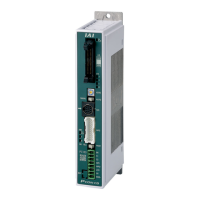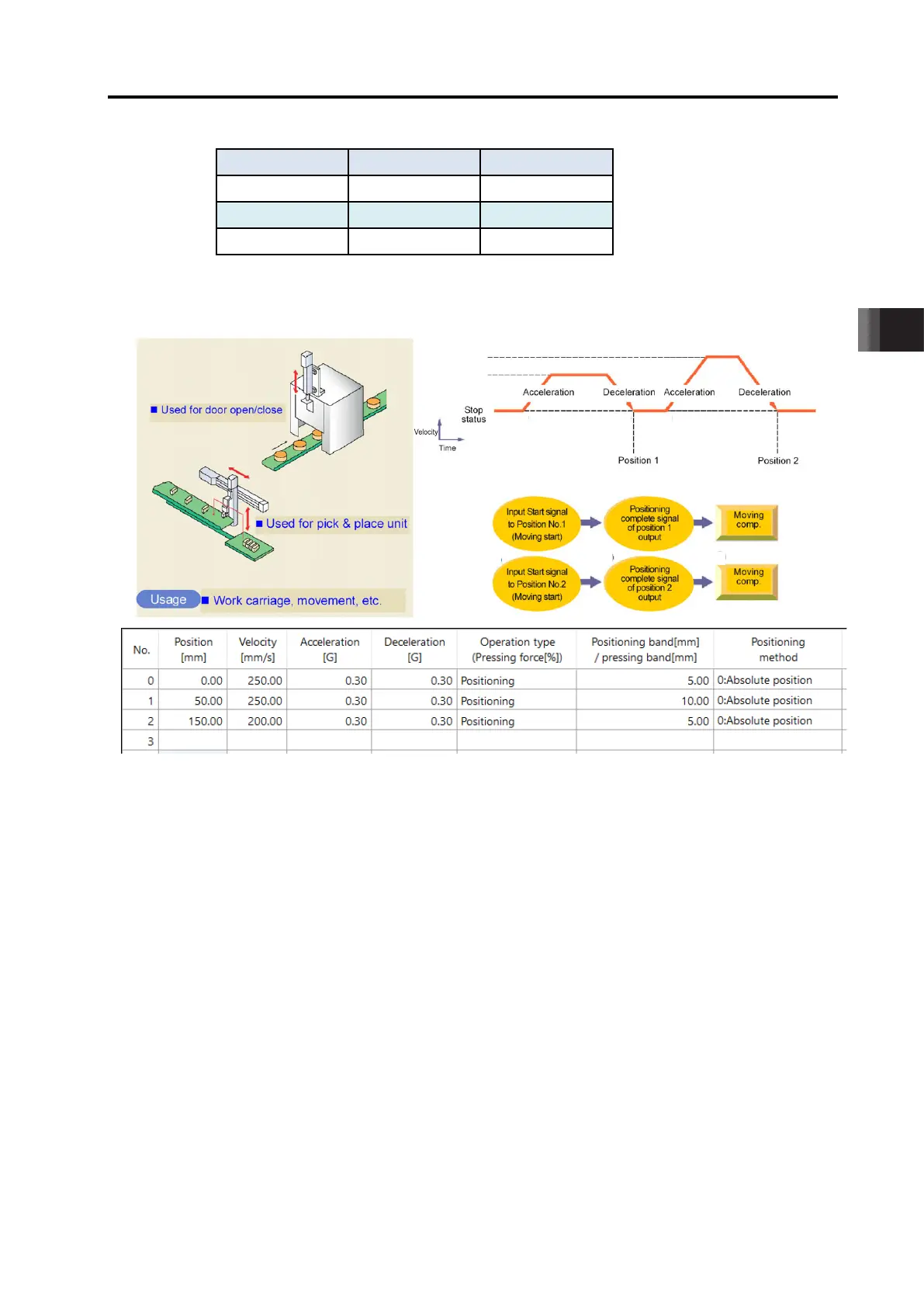4. Operation
4.2 Operation in Positioner Mode
4-90
ME0342-4B
[2] Features of LS Signals (LS0 to 2)
The LS* signals are not complete signals for positioning commands such as those for other PIO
patterns. Just as it does in detection with a sensor, the applicable LS* Signal should turn ON
once the actuator gets in the range of the setting values regardless of the indicated position
number.
(Example) The figure below shows the position table and the position at which each of the LS
signals is turned ON. It turns ON if the actuator is in the set range even when in
operation to another position number or with the actuator in a manual operation by
hand while the servo is OFF.
Caution
LS* signal would not be output if the positioning width is set less than the minimum
resolution.
LS1 is ON
70±10mm
LS2 is ON
150±5mm
4.2 Operation in Positioner Mode
ME0342-4B 4-91
[3] Positioning [Basic] (ST0 to ST2, LS0 to LS2)
(Note) Pressing and pitch feed are unavailable.
■ Sample use
■ Control method
1) When start signal ST* is turned ON, the actuator starts acceleration based on the data in the
specified position table for positioning to the target position. Turning the ST* signal OFF on
the way causes the actuator to be decelerated and stopped. So, make the ST* signal remain
ON until the actuator reaches the target position.
2) At the completion of positioning, position detection output LS* of the specified position is
turned ON.
3) Position detection output LS* is turned ON if the remaining moving distance enters into the
positioning width. LS* is set to ON if the current position is located within the positioning width
zone or OFF if the current position is located out of the positioning width zone (the same
situation occurs in the servo OFF status).
4) Leave the ST* signal to be ON until the actuator is moved to another position and turn off it at
the next ST* signal. If the ST* signal is turned OFF at the LS* signal, the actuator is
decelerated to a stop in the positioning width and thus the actuator may not reach the target
position. In continuous operation, turn on the next ST* signal by setting the positioning width
within the required precision range or setting the period taken from detection of the LS*
signal to reaching the target position.

